By Mike Smith -
My first real coaching “job” was as a girls junior varsity head coach / varsity assistant. The varsity coach who hired me quickly became a mentor and good friend, but I soon found out the “ varsity assistant” title meant after practice shooting dummy for the former Man U Developmental Player and Iowa State stand out. It was a trial by fire but I will never forget the day I finally heard, in his best James Bond voice – “ Mike, your keeper skills have really improved.” Part of this improvement was learning to shift my weight to the ball side leg and either kick it out to drop quickly and smother the ball or launch from a point at least 1 foot closer to the ball enabling me to push the shot off frame, as shown below.
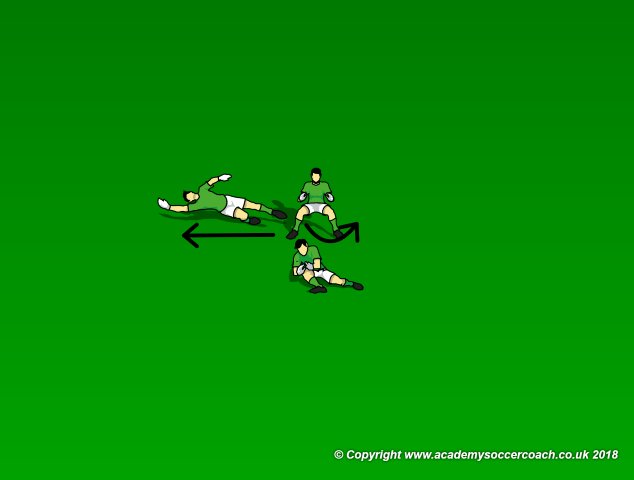
The diagram ( above ) shows the weight being shifted to the keepers right ( screen left ) where the right foot can either be kicked across the body for the drop – as shown by the collapsed keeper icon – or the weight can be launched from the right foot for the dive – as shown by the diving keeper icon. This is a simple concept but one which is often missed leading to balls getting through under or just out of reach of the keeper. If your keeper is active enough to make most saves but seems to be missing them, it could be due to a poor weight shift.
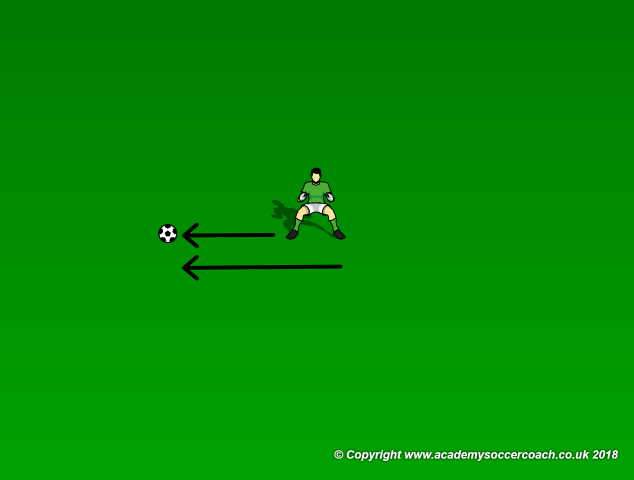
The launch point for the diving is especially important and the diagram above shows this as a clear mathematical issue. If the keeper launches from their right foot in the diagram, they are starting approximately 3 feet closer to the ball than if they launch from their back foot. Even if they do push from their inside foot, if they are waiting to shift their weight until the ball is struck, then it is essentially the same as leaving from 3 feet farther away. I would take a 3 foot head start in any race I have ever run, as would anyone, it’s just simple math.
Set Up
To get your keeper ( keepers ) focusing on proper weight shifting, first explain the concepts and demonstrate as I have above. Then, help them put it in play. Start with some collapsing on the ball by kicking their foot out across their body.
The diagram below shows a rotation between 3 keepers, if your squad does not have 3 keepers use 2 and a volunteer ( there always seems to be that one player who isn’t a keeper but doesn’t know it and is always willing to try – this one will do fine and the inclusion will most likely make their day. I call these players the “ emergency keepers” ). The keeper in the goal throws the ball out to the keeper at the penalty spot and then gets set to drop on to a low roller. The third keeper then steps in ready to throw a ball out and drop as the shooting keeper moves out and the starting keeper gets set on the penalty mark ( as shown below ). The shots can get progressively harder but power should not replace accuracy here as the shots must be low and close.
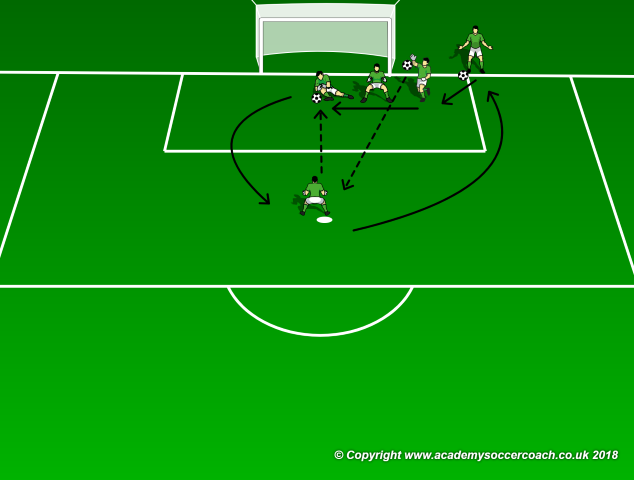
Progression
Progress to diving for the ball with the goal of pushing it off frame, just past the bar, preferably out of bounds ( as shown below). The rotation remains the same.
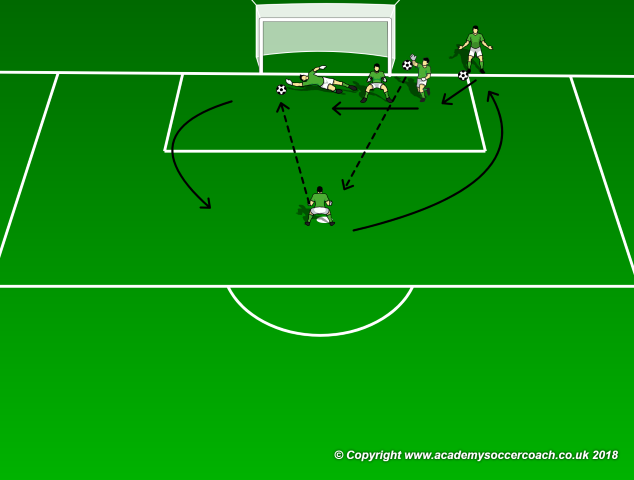
Final Progression
A standard 4 corners type shooting drill is a great way to finish off the session. As shown below, have the keepers face shots from both sides and really focus on collapsing on the ones they can smother and diving to push the balls off frame on those shots that can’t be taken in. The coach should encourage the shooters to keep the shots low and driven at varying angles and targets wit in the goal ( side netting, far post, near post, back netting, etc…)
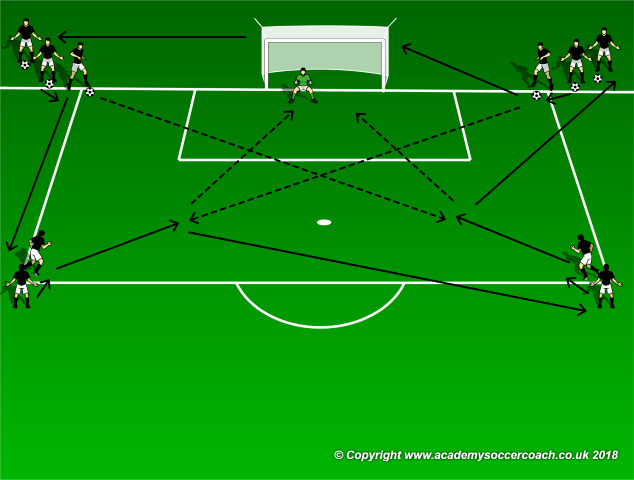
Coaching Points
The concept of a good weight shift is quickly learned and easily mastered. The coach should help the keeper by encouraging them to stay active with their feet and ready to shift and drop, or shift and dive. If the keeper is advancing well with the concept, the coach can encourage the keeper to step out and try to force the shooter in the desired direction by “giving them” a bit more net to look at on one side - which is baiting the shooter to place the ball where the keeper is expecting to have to dive or drop anyway. A few of these sessions and improvements should be noticeable, especially on match day.
By Mike Smith
Currently the Head Coach for University Heights Academy Boys Soccer in Hopkinsville, KY , Mike is in his 14th year as a high school head coach with 23 years coaching experience overall and 34 year as a student and fan of the game. He holds a USSF D License.


